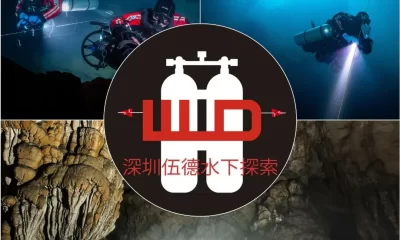Community
How to Choose Your Dive Training
How should you pick a diving instructor? Taking a scuba class is NOT the same as buying a loaf of bread! Though both items involve bubbles. British instructor and wreck and cave diver Rich Walker outlines some of the things you may want to think about when deciding what’s next on your training agenda and who you want to do it with!
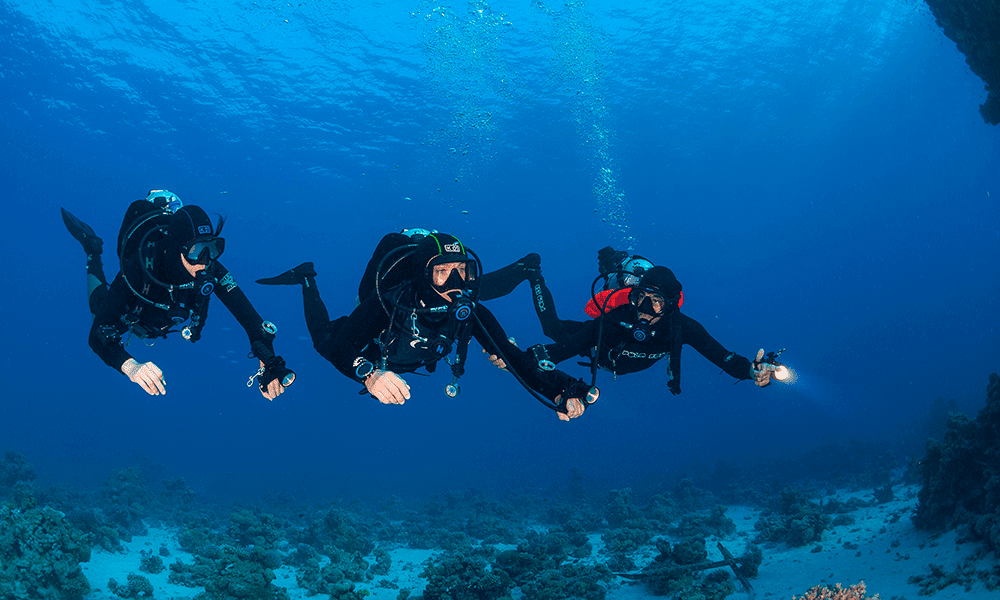
By Rich Walker
There’s a funny thing about taking a scuba diving course; it’s not the same as buying a loaf of bread. If you don’t like the bread, you buy a different type the next day or choose another bakery. It’s basically a recurrent cost, and you can try the type of bread that strikes your fancy on any particular day.
With a scuba diving course, whether it be an open water course or an advanced technical curriculum, most people will only ever take that particular class once. After all, how many people do you know that have done two open-water courses?
So how should you make decisions about your training?
I think that before you can answer that question, you need to take a step back and decide why you’re looking at training in the first place. If it’s because your friends, or local dive store, or some guy on the internet told you that you need to take the “advanced technical helium rescue specialty (sidemount version)” because that was the next step on your pathway to becoming an awesome diver, then do yourself a favor and stop everything. It’s time for a reset.
Conversely, a good strategy when looking at further training is to think about the kind of diving that you’d love to do. It might be a World War II wreck dive in the cold waters of a Norwegian Fjord. Maybe it’s a reef in the Philippines with unparalleled biodiversity. It could be a cave system deep in the Mexican jungle with pristine formations and endless visibility. Your imagination is the driver in this process. Read magazines and books. Follow the footsteps of other explorers. But be sure to have an idea of where you’re going.
In other words, set yourself a goal.
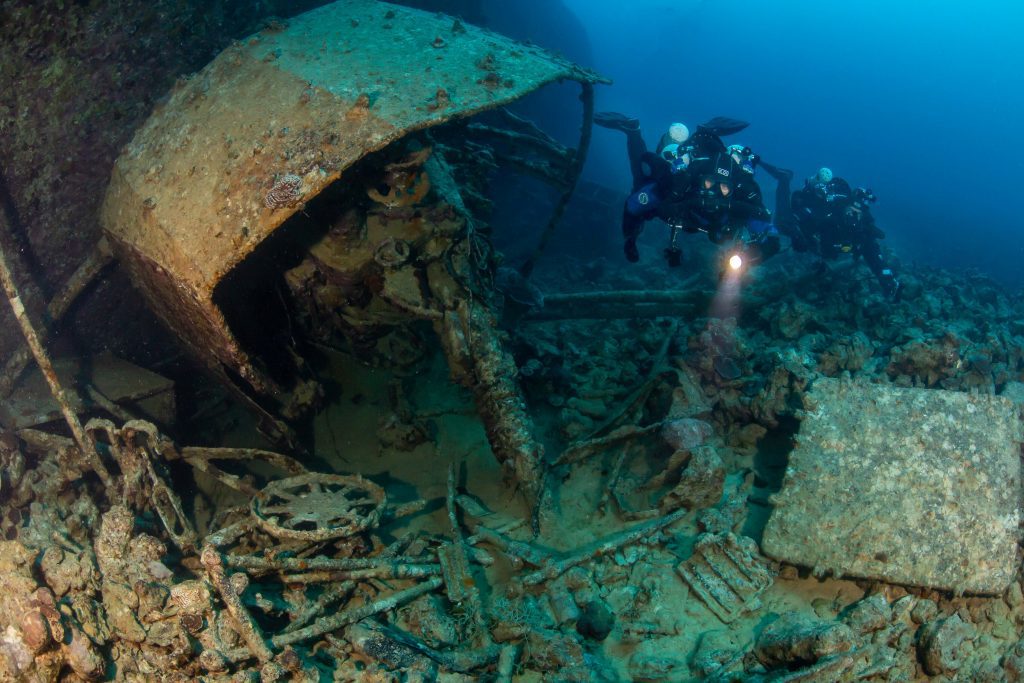
The Right Tool for the Right Job
Once you’ve got a goal in mind, it’s time to look at the skills you’d need to learn in order to do that dive. Now it’s often said that “you don’t know what you don’t know” so how are you to work out what it is that you need to learn?
Most diver training relates to either a particular environment or a type of equipment. Some environments that you encounter would include caves (or other overhead environments), deep diving (including decompression diving), or cold water. Equipment can generally be simplified into open circuit (back mounted), open circuit (side mounted), or rebreather.
Now you should look at your intended goal and try and work out what skills are needed as well as what equipment would be most appropriate to make those dives. I find that I switch between all three equipment configurations on a regular basis, depending on the tool I need for the job. But choose the right equipment for your goal.
Backmount open circuit equipment is great for diving to a depth of 50-60 m/164-197 ft. Don’t get hung up on the exact numbers. You can argue about the precise depth on the internet. Beyond that, rebreathers become much more efficient.
Sidemount is seful in small, overhead environments. It’s not so good if you need to carry a lot of gas. People will tell you they can dive deep on sidemount with lots of stages. You can. But there are better ways.
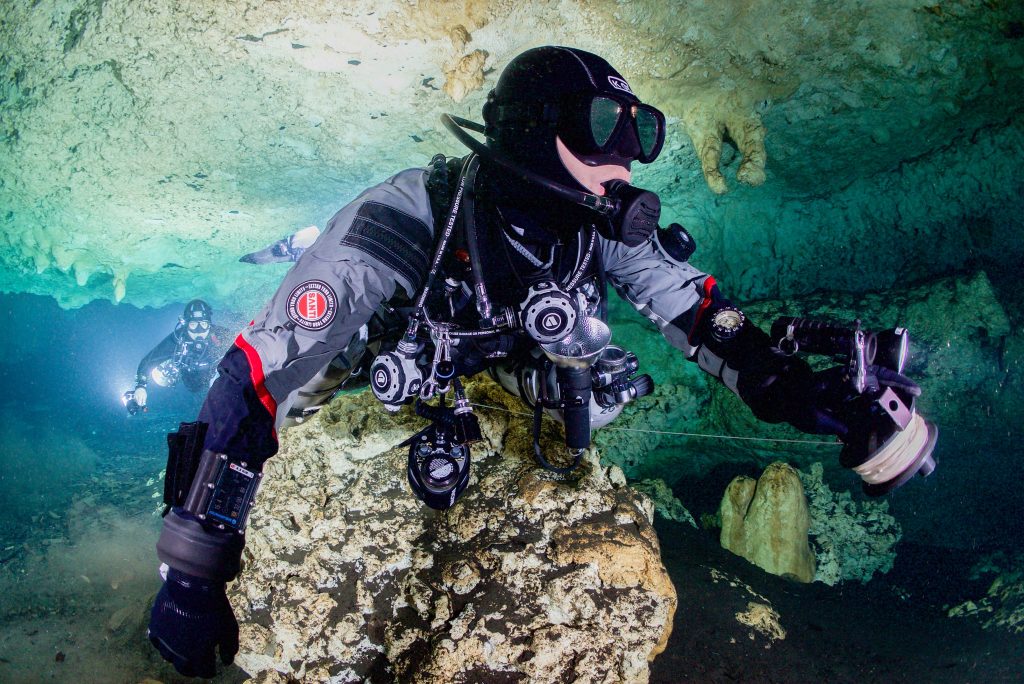
You can dive shallow on a rebreather too. But open circuit is simpler, cleaner, and cheaper. You can also dive very deep on open circuit. But most people would now agree that rebreathers come into their own for deep diving.
Decide what tools would be best for the goal you want to achieve.
The Right Stuff
Next, you will want to connect the tools that you will need with the right kind of training. Most agencies have a course that will fit your requirements. Deep, sidemount, cave, whatever. But don’t forget, as a general rule, you will only take a single class at the level you need, so it’s important to take the right class. So now you need to do some homework.
At this stage it’s worth highlighting a very important point: you should never consider taking a “deep air class” or any other variant. Any project that is deeper than 30 m/100 ft will be much better using helium in the breathing mixture. It’s easier to breathe, reduces narcosis, and is ultimately a much safer gas. If you “need” to take a 50 m/164 ft air class before progressing to another level, then look elsewhere for your training.
Now that’s out of the way, have a look at the instructors that are offering the kind of training you need. There are a few criteria you can use to evaluate your potential instructor. Remember they are there to do a job for you, and you should check their credentials in the same way you would expect to be checked if you were applying for a job.
Do they have the correct experience?
I once gave a talk to 30-40 dive professionals and shop owners. I was delivering a piece about how project diving could help build a community of active divers that would help their businesses flourish. I asked them to put up their hand if they’d dived within the last two months. Half of the hands went up. I asked them to leave their hands up if those dives had been “personal” dives, i.e. not teaching. Sadly mine was the only hand still in the air.
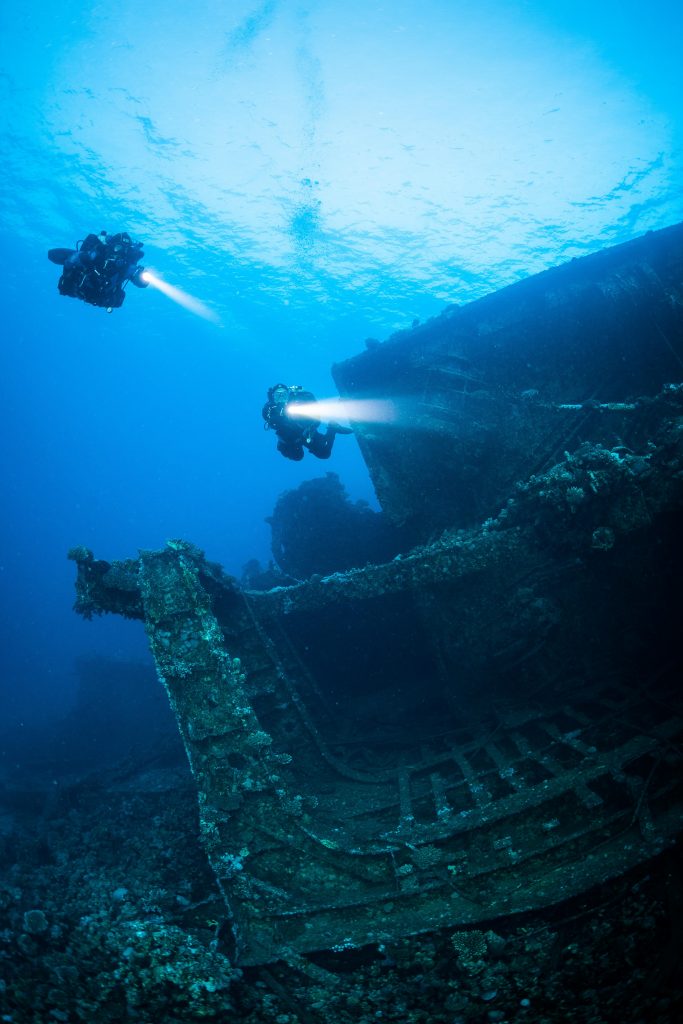
Make sure that your instructor is doing “real” dives. And that those dives are aligned with your goal. That way, you will be able to gain valuable experience from your instructor that is more than just the content of a slide presentation. You should be looking for an instructor that can provide value above and beyond the course standards and help you build the skills that you need to achieve your goals.
Book a Day
The easiest way to find out if you have the right instructor is to book a day with your potential candidate. You might need to pay a coaching fee for this, but if you explain where you’re heading and what your goals are, the instructor might waive their fee. But don’t expect it.
Take the time to talk to them. Find out their history. What were their goals and how did they achieve them? This is part of working out if your potential instructor is the right sort of diver to learn from.
Make sure that you get to dive with them, too. I’m going to tell you some secrets about this process now. Some inside information, if you will. Pick some skills that you already know, but maybe need a little refinement. Don’t go for brand new skills. This way you have the advantage that you more or less know what you’re doing, and you have the capacity to evaluate how the skills are delivered and taught. Now, have your potential instructor help you with these skills.
Clear Briefs, Demonstrations, and Personal Skills
Listen carefully to the dive briefing. Is it exactly clear what your potential instructor wants you to do and how the dive will be conducted? This is crucial when it comes to learning new skills. If you don’t know what’s expected of you it will be much harder to learn the new skills.
Take a good look at how your instructor looks in the water. Do you want to look like them? If they are kneeling down to do a skill or not in precise control of their buoyancy then how effective do you think they can be at delivering the skill to you?
Did they demonstrate the skill? Is it how you would like to look? If it doesn’t make you think “Wow! That was well done,” then maybe they’re not a good match for you.
But what should you be looking for? Instructors should be in complete control of their position in the water at all times. They should be neutrally buoyant and able to position themselves wherever they need to be to be effective. They should always be able to communicate with you, the student, and be in a position to give help and feedback if needed.
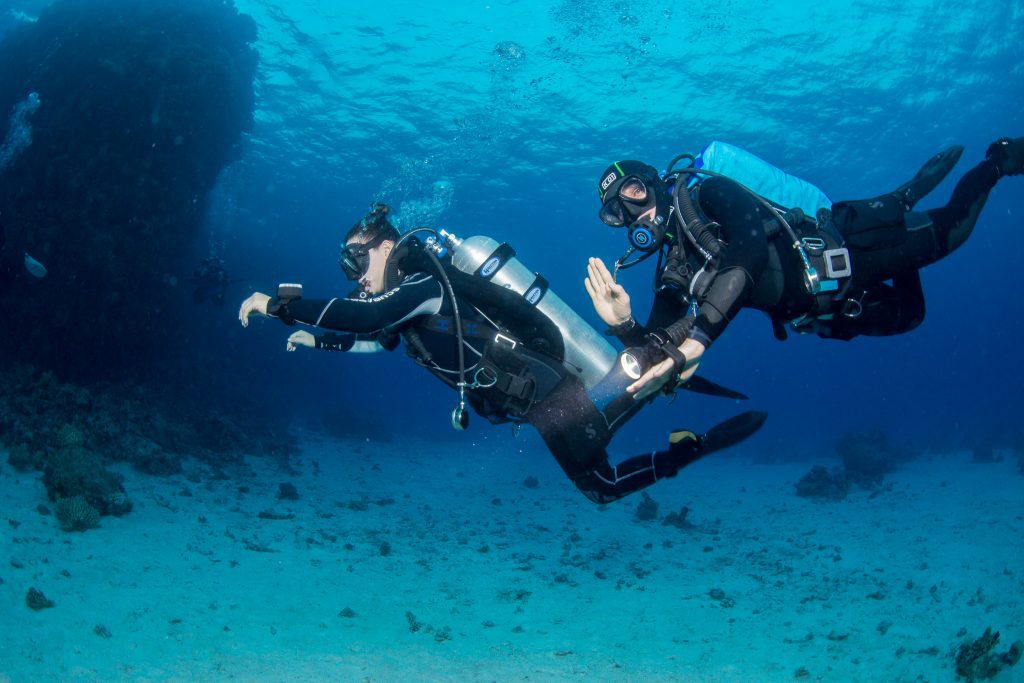
The demonstration should be clear and slow. It should highlight the important points that were mentioned in the briefing. It should act as a trigger to your memory to help you when you perform the skill yourself.
When you’re doing the skill how does the instructor work? Are they looking at you and giving you feedback? The instructor should be helping you to get better, and there is no more effective way than to explain how to improve while you’re underwater. Right there in the moment. Their signals and communication should either be intuitive and obvious or have been briefed beforehand. They should know common student problems, so you should expect that they have a repertoire of instructional signals to use when teaching.
Not providing in-water feedback is something to be concerned about. Without it, if you don’t get a skill right in the water, then you will need to make another dive to correct it. Which is pretty inefficient when you think about it.
Debriefing Skills
Not all things can be fixed underwater. So a debrief is a critical final step of the process. The debrief should reinforce and encourage the things you did well but also give you a pathway and solutions for how to improve on the next dive. Solutions need to be specific. By this, I mean things like, “Keep your head up when sending up a marker buoy. It will help you stay referenced on your team and environment” or, “Make sure your backwards kick is slow and precise. Too much power will make you unstable.”
Feedback like, “That was awesome, you just need to practice more” is all too common. If it was “awesome,” then it wouldn’t need more practice. And if it needs practice, what exactly are you supposed to do? The same thing over and over? You need a solid, practical solution. And you should expect one from any instructor you are going to employ.
The final thing to consider is, do you enjoy spending time with your instructor? They should not feel like your “best friend.” There needs to be a professional relationship, rather than a friendship, as they may have to deliver some firm feedback to you at some point. If you’ve been best friends for four days, then it can be psychologically challenging when your new friend gives you some tough love. The counterpoint is that you should be able to enjoy your time with this instructor. They should not intimidate you, speak down to you, or make you feel bad about yourself. If they make you feel like that, again, find another instructor.
If you go through these steps and follow the advice, you are very likely to choose a good pathway for your diving. Remember though, your goals are the foundation for all of this. Without them, you will wander from c-card to c-card, and one equipment configuration to the next, and not really achieve your dreams.
Get clear on your goals, and go achieve them!
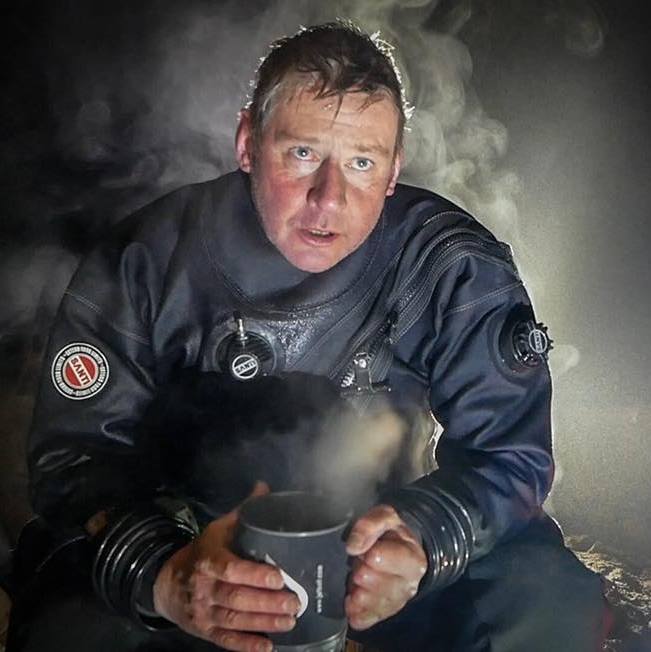
Rich Walker learned to dive in 1991 in the English Channel and soon developed a love for wreck diving. The UK coastline has tens of thousands of wrecks to explore, from shallow to deep technical dives. He became aware of GUE in the late 1990’s as his diving progressed into the technical realm, and eventually took cave training with GUE in 2003. He began teaching for GUE in 2004.
Walker is an active project diver, and is currently involved with the MARS project in Sweden, and cave exploration in Izvor Licanke, Croatia. He is also chairman and founder of Ghost Fishing UK. He is a full time technical instructor and instructor evaluator with GUE, which he delivers via his company, Wreck and Cave Ltd. He sits on the GUE Board of Advisors, and several other industry bodies.





























